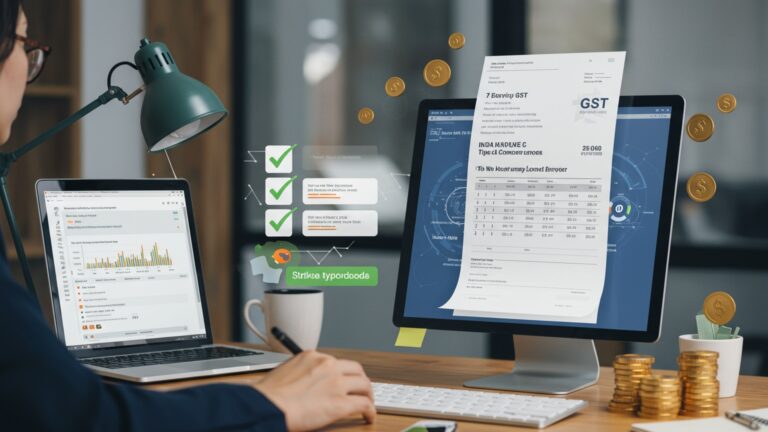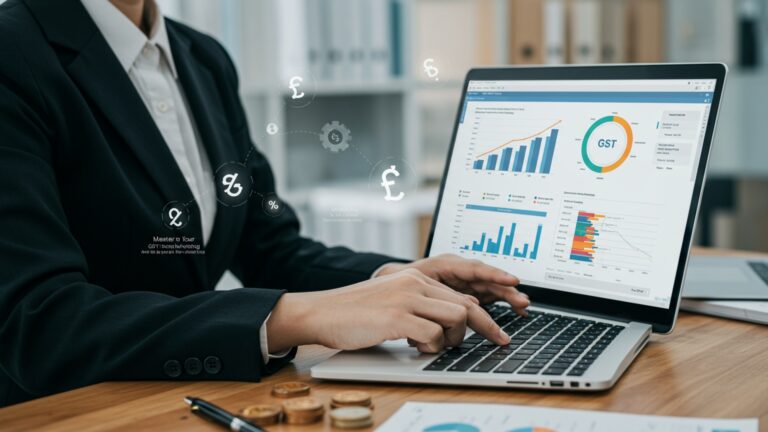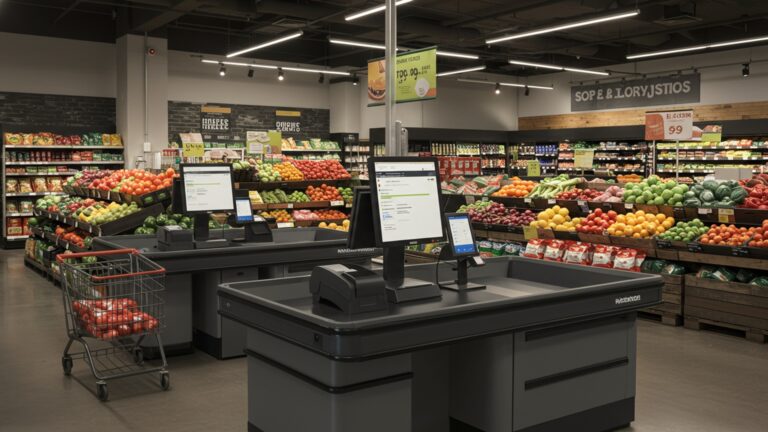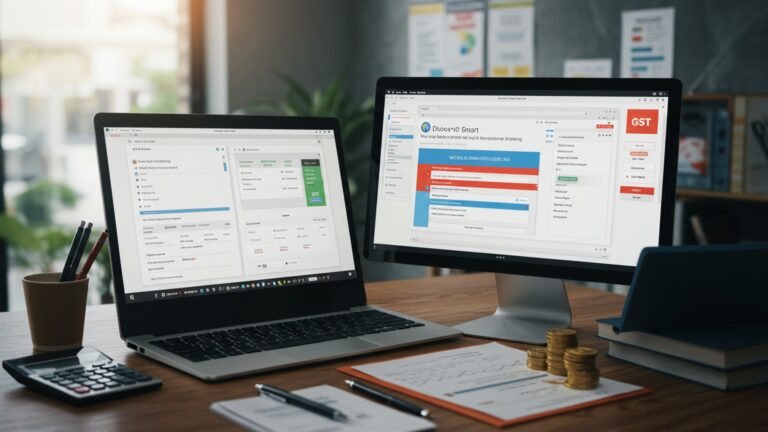Learn 9 Practical Strategies to Streamline Billing Process and Boost Business Efficiency
Lagging financial operations often stem from an overlooked culprit: an inefficient billing process that siphons resources and delays critical cash flow. Businesses frequently struggle with fragmented invoicing systems, manual data entry errors. a reactive approach to payment collection, directly impacting profitability and client relationships. As digital transformation accelerates, leveraging advancements like AI-powered automation and integrated payment gateways is no longer optional but essential for maintaining competitive agility. Mastering the art of a truly streamlined billing process transforms it from a mere administrative burden into a strategic asset, significantly boosting operational efficiency and fortifying financial resilience in a dynamic market.

Automate Your Invoicing Process
One of the most impactful steps you can take to streamline billing process is to automate your invoicing. Manual invoicing, while seemingly straightforward, is a time-consuming and error-prone endeavor. It involves drafting each invoice, calculating totals, applying taxes. then sending them out, often one by one. This labor-intensive approach can lead to delays, inconsistencies. ultimately, slower payments.
What is Automated Invoicing?
Automated invoicing leverages software to generate, send. track invoices with minimal human intervention. You set up templates, customer details. service/product lists once. the system handles the rest. For recurring services, the software can automatically generate and send invoices on a pre-defined schedule (e. g. , monthly, quarterly).
- Time Savings
- Reduced Errors
- Consistency
- Faster Delivery
Imagine the hours saved by not manually creating hundreds of invoices each month. This time can be reallocated to more strategic business activities.
Automation significantly reduces human error in calculations, data entry. even sending to the wrong client.
Ensures all invoices adhere to a standard format, improving professionalism and clarity for clients.
Invoices are sent instantly via email, reaching clients much quicker than traditional mail.
Consider “Creative Minds Agency,” a small digital marketing firm. Before automation, their office manager spent two full days at the end of each month creating and sending invoices. After implementing an automated system through QuickBooks Online, this task now takes less than two hours. This freed up 14 hours monthly, allowing the manager to focus on client relationship building and project coordination, directly contributing to business growth.
Invest in reputable accounting or invoicing software like Xero, FreshBooks, or Zoho Invoice. Configure recurring invoices for your regular clients and utilize template features to standardize your billing. This single step can dramatically streamline billing process and improve your cash flow.
Embrace Digital Payment Gateways
In today’s fast-paced digital economy, expecting clients to pay solely via checks or bank transfers can create unnecessary friction and delay. Embracing digital payment gateways is crucial to streamline billing process and meet customer expectations for convenience and speed.
What are Digital Payment Gateways?
A digital payment gateway is a service that authorizes credit card or direct payment processing for businesses. It acts as a secure intermediary between your business, your customer. their bank, ensuring that sensitive financial details is encrypted and transmitted safely. Popular examples include Stripe, PayPal. Square.
- Customer Convenience
- Faster Payments
- Global Reach
- Enhanced Security
Clients can pay with a few clicks from anywhere, at any time, using their preferred method (credit card, digital wallet).
Digital payments are processed almost instantly, significantly reducing the time it takes for funds to reach your account.
Many gateways support multiple currencies and international transactions, expanding your market.
Reputable gateways are PCI DSS compliant, meaning they adhere to strict security standards for handling payment details, protecting both your business and your customers.
While many options exist, understanding their core differences can help you choose wisely.
| Feature | Stripe | PayPal | Square |
|---|---|---|---|
| Primary Use Case | Online businesses, custom integrations, subscription services | General online payments, international transactions, P2P payments | In-person point-of-sale (POS), online stores, small businesses |
| Transaction Fees (typical) | 2. 9% + $0. 30 per online transaction | 2. 9% + $0. 30 per online transaction (varies) | 2. 6% + $0. 10 for in-person; 2. 9% + $0. 30 for online |
| Setup Difficulty | Requires some technical knowledge for full integration | Easy, widely recognized, simple button integration | Easy, comprehensive ecosystem for various business types |
| Key Strengths | Developer-friendly APIs, highly customizable, robust fraud prevention | Brand recognition, buyer protection, international reach | POS hardware, inventory management, user-friendly for small businesses |
Integrate at least one, if not multiple, digital payment gateways into your invoicing system and website. Make sure the options are clearly visible on your invoices. Offering flexibility in payment methods will significantly streamline billing process and improve customer satisfaction, leading to quicker payments. For example, include a clear “Pay Now” button on your digital invoices that links directly to a secure payment portal.
Institute Crystal-Clear Payment Terms
Ambiguity is the enemy of efficient billing. Unclear payment terms are a common cause of delayed payments, disputes. frustrated clients. To truly streamline billing process, your payment terms must be unambiguous, prominently displayed. consistently applied.
What Constitutes Crystal-Clear Payment Terms?
These are the explicit rules and expectations regarding when and how payment for goods or services is due. They should leave no room for misinterpretation and cover all essential aspects of the transaction.
- Due Date
- Accepted Payment Methods
- Late Payment Penalties
- Early Payment Discounts (Optional)
- Contact data
Specify an exact date or a clear timeframe (e. g. , “Net 30 days,” “Due upon receipt,” “Due by October 31, 2024”).
Clearly list how clients can pay (e. g. , “Credit Card (Visa, MasterCard), Bank Transfer, PayPal”).
Outline any fees or interest charged for overdue invoices. This acts as an incentive for timely payment (e. g. , “A late fee of 1. 5% per month will be applied to overdue balances”).
If you offer incentives for early payment, clearly state them (e. g. , “2% discount if paid within 10 days”).
Provide clear contact details for billing inquiries.
A freelance web developer, Sarah, used to simply put “Payment Due” on her invoices. She frequently faced clients paying weeks late, citing they “didn’t realize” the payment was urgent. After consulting a business advisor, she changed her terms to “Payment Due: Net 15 days from invoice date. A 2% late fee will be applied monthly to balances overdue by more than 30 days.” She also included a sentence: “For billing inquiries, please contact
billing@sarahwebdev. com
.” The change was immediate; her payment collection improved by over 40% within three months, showcasing how clear terms directly impact cash flow and help streamline billing process.
Review your current invoices and contracts. Ensure your payment terms are concise, easy to interpret. legally sound (consider consulting with a legal professional for complex terms). Place them prominently on all invoices, proposals. agreements. Educate your sales team to communicate these terms upfront during client onboarding. This transparency sets expectations and reduces future payment issues.
Implement Proactive Payment Reminders
Even with clear payment terms and digital gateways, clients can sometimes forget. Proactive, automated payment reminders are a gentle yet effective way to nudge clients without resorting to awkward manual follow-ups. This strategy is essential to streamline billing process and prevent invoices from falling through the cracks.
What are Proactive Payment Reminders?
These are automated communications (usually emails or SMS) sent to clients at various stages of the billing cycle: before an invoice is due, on the due date. if it becomes overdue. The goal is to remind clients of their obligation and provide an easy way to pay.
- Pre-Due Date Reminder
- On-Due Date Reminder
- Overdue Reminders
A polite reminder a few days before the invoice is due. This helps clients plan and ensures they don’t miss the deadline.
A quick note on the due date, especially useful if the invoice was sent further in advance.
A series of increasingly firm (but still professional) reminders after the due date, often with escalating intervals (e. g. , 3 days overdue, 7 days overdue, 15 days overdue).
- Improved Cash Flow
- Reduced Manual Work
- Maintains Professionalism
- Enhanced Customer Experience
Significantly reduces the average time it takes to get paid.
Frees up your team from manually chasing payments.
Automated, templated messages are consistent and avoid emotional or accusatory tones.
Some clients appreciate the reminder as they simply forgot.
Many modern accounting software solutions like Xero or FreshBooks allow you to configure these sequences:
- Email 1 (7 Days Before Due)
- Email 2 (On Due Date)
- Email 3 (3 Days Overdue)
- Email 4 (15 Days Overdue)
“Just a friendly reminder that Invoice #12345 for $500 is due on [Date].”
“Your Invoice #12345 for $500 is due today. You can pay securely here: [Payment Link].”
“This is a reminder that Invoice #12345 for $500 was due on [Date] and is now 3 days overdue. Please click here to make payment: [Payment Link].”
“Our records show Invoice #12345 for $500, due on [Date], is now 15 days overdue. A late fee may apply as per our terms. Please contact us if you are experiencing difficulties.”
Configure automated payment reminder sequences within your chosen accounting or invoicing software. Personalize the messages to maintain a friendly yet professional tone. always include a direct link to your digital payment gateway. This proactive approach will help you streamline billing process by significantly reducing overdue invoices and improving cash flow without extensive manual effort.
Integrate Billing with CRM Systems
For businesses focused on customer relationships, siloed data can be a major hindrance. Integrating your billing system with your Customer Relationship Management (CRM) system is a powerful way to streamline billing process while enhancing customer service and sales efficiency.
What is CRM Integration with Billing?
A CRM system, such as Salesforce, HubSpot, or Zoho CRM, is designed to manage all aspects of customer interactions and data. When integrated with billing software, it means that customer details, sales history, billing status. payment records are accessible from a single, unified platform.
- Centralized Customer Data
- Enhanced Customer Service
- Improved Sales Insights
- Reduced Data Entry & Errors
- Personalized Communication
All client data, from contact details to purchase history and billing status, is in one place.
Support teams can instantly see a client’s payment history, quickly addressing billing inquiries and resolving disputes.
Sales teams know if a client has outstanding invoices before making new proposals, avoiding awkward situations.
data flows automatically between systems, eliminating duplicate data entry and minimizing transcription errors.
comprehend a customer’s full financial relationship with your business, allowing for more tailored interactions.
“TechSolutions Inc.” integrated their billing software (Xero) with their CRM (Salesforce). Previously, if a customer called with a billing question, the support agent had to switch between systems, often putting the customer on hold. Now, with a single search in Salesforce, the agent can see all past invoices, payment dates. outstanding balances. This has reduced average call handling time for billing inquiries by 30% and significantly improved customer satisfaction, proving a robust way to streamline billing process from a customer service perspective.
Explore integration options between your current CRM and billing software. Many popular platforms offer native integrations or connect via third-party tools like Zapier. Ensure data synchronization is set up correctly to maintain accuracy. A unified view of your customer’s journey, including their financial interactions, will not only streamline billing process but also empower your entire team to deliver superior service and make more informed business decisions.
Adopt Subscription and Recurring Billing Models
For businesses with ongoing services or products, shifting to a subscription or recurring billing model can dramatically streamline billing process, enhance revenue predictability. reduce the administrative burden of one-off invoicing.
What are Subscription and Recurring Billing Models?
These models involve charging customers on a regular, pre-determined schedule (e. g. , monthly, annually) for continuous access to a product or service. Instead of billing for each individual transaction, customers are enrolled in an ongoing payment plan.
- Subscription Billing
- Recurring Billing
Typically refers to services with tiered access or a specific duration (e. g. , software as a service – SaaS, streaming services, gym memberships).
A broader term that includes subscriptions but also ongoing services like maintenance contracts, hosting fees, or retainer agreements.
- Predictable Revenue
- Reduced Administrative Overhead
- Improved Customer Retention
- Easier Forecasting
Creates a steady, foreseeable income stream, making financial planning much easier.
Once set up, the billing process is largely automated, requiring minimal manual intervention.
Customers are less likely to churn when they are part of an ongoing service and see continuous value.
Predict future cash flow with greater accuracy, aiding in budgeting and growth strategies.
Comparison: One-Time Project vs. Recurring Service
| Aspect | One-Time Project (e. g. , website build) | Recurring Service (e. g. , website maintenance) |
|---|---|---|
| Billing Frequency | Project-based, milestone payments, or single lump sum | Monthly, quarterly, annually |
| Revenue Predictability | Low, dependent on new projects | High, steady income stream |
| Administrative Effort | High, new invoice for each project/milestone | Low, automated recurring invoices |
| Customer Relationship | Transactional, project-focused | Ongoing, partnership-focused |
Many SaaS companies like Adobe Creative Cloud or Microsoft 365 have perfected this model. Instead of selling a software license once, they offer monthly or annual subscriptions, ensuring continuous revenue and a stable customer base. Similarly, a local cleaning service could offer monthly home cleaning packages instead of charging per visit, benefiting both the business (predictable income, streamlined billing) and the customer (consistent service, transparent pricing).
Evaluate your products and services to identify those that can be packaged into subscription or recurring models. Implement billing software (like Chargebee, Zuora, or even advanced features in Stripe) specifically designed to handle recurring payments, including prorations, upgrades. downgrades. This strategic shift will significantly streamline billing process and provide a more stable financial foundation for your business.
Leverage Cloud-Based Accounting Software
Moving your accounting and billing operations to the cloud is not just a trend; it’s a fundamental shift that empowers businesses to streamline billing process, enhance collaboration. gain real-time financial insights. Traditional desktop software can limit accessibility and create data silos.
What is Cloud-Based Accounting Software?
Cloud-based accounting software, also known as Software-as-a-Service (SaaS) accounting, is hosted on remote servers and accessed via a web browser or mobile app. Instead of installing software on individual computers, you log in to a secure online platform. Examples include Xero, QuickBooks Online. Sage Business Cloud Accounting.
- Anytime, Anywhere Access
- Real-Time Data
- Enhanced Collaboration
- Automatic Backups & Updates
- Scalability
Work from the office, home, or on the go. All you need is an internet connection. This is invaluable for remote teams or business owners who travel.
Financial data is updated instantly, providing an accurate, up-to-the-minute view of your cash flow, expenses. revenue.
Multiple users (e. g. , business owner, bookkeeper, accountant) can access and work on the same financial data simultaneously, improving efficiency and communication.
Data is automatically backed up to secure cloud servers, protecting against data loss. Software updates are handled by the provider, ensuring you always have the latest features and security patches.
Easily scale your plan up or down as your business needs change, without needing to purchase new licenses or hardware.
When dealing with sensitive financial data, security is paramount. Reputable cloud providers implement robust security measures:
- Data Encryption
- Multi-Factor Authentication (MFA)
- Regular Audits & Compliance
Data is encrypted both in transit (when you access it) and at rest (when stored on servers).
Adds an extra layer of security to prevent unauthorized access.
Providers adhere to industry standards like PCI DSS (Payment Card Industry Data Security Standard) and SOC 2 (Service Organization Control 2) reports, ensuring their systems are secure and reliable.
A growing e-commerce startup, “Global Gadgets,” initially used desktop accounting software. Their remote bookkeeper struggled to access files. the owner often had outdated financial reports. Migrating to QuickBooks Online transformed their operations. The owner could check sales figures from their phone, the bookkeeper could reconcile accounts daily. their external accountant had real-time access, making tax season far less stressful. This move directly contributed to their ability to streamline billing process and overall financial management.
If you’re still relying on desktop software, plan a migration to a cloud-based accounting solution. Research providers that offer strong security, excellent integration capabilities (especially with your other business tools). features that cater to your specific industry. The initial setup time will be quickly offset by the long-term benefits of accessibility, collaboration. real-time insights, all of which contribute significantly to your ability to streamline billing process.
Utilize Data Analytics for Billing Insights
Beyond simply processing invoices, smart businesses examine their billing data to uncover hidden opportunities and address inefficiencies. Leveraging data analytics is a sophisticated yet accessible way to continuously streamline billing process and make data-driven decisions that impact your bottom line.
What is Data Analytics for Billing?
This involves collecting, processing. analyzing data related to your billing activities – invoices sent, payments received, payment dates, late payments, customer segments, service profitability. more. The goal is to identify trends, patterns. anomalies that can inform strategic improvements.
- Days Sales Outstanding (DSO)
- Aging Report
- Customer Payment Behavior
- Service/Product Profitability
The average number of days it takes for your business to collect revenue after a sale has been made. A lower DSO indicates a more efficient billing process.
Categorizes outstanding invoices by the length of time they’ve been overdue (e. g. , 1-30 days, 31-60 days). Helps identify problematic accounts.
Which customers pay on time, which are consistently late. which payment methods are preferred.
Which offerings generate the most revenue and profit after accounting for billing and collection costs.
- Identify Bottlenecks
- Optimize Collection Strategies
- Improve Pricing Models
- Enhanced Customer Segmentation
- Fraud Detection
Pinpoint where delays occur in your billing cycle.
Tailor your reminder sequences based on customer segments or invoice types.
interpret which services are most profitable and adjust pricing or offerings accordingly.
Identify high-value customers who consistently pay on time versus those requiring more follow-up.
Spot unusual payment patterns that might indicate fraudulent activity.
A subscription box company noticed a spike in churn after the third month of subscription. By analyzing billing data alongside customer feedback, they discovered that a significant portion of customers were canceling due to an unexpected jump in shipping costs for their third box. They adjusted their pricing model to be more transparent about shipping from the start. This data-driven insight, stemming from billing analytics, not only helped them streamline billing process by reducing customer service inquiries but also improved customer retention and overall revenue.
Most modern accounting software includes robust reporting features that allow you to generate these insights. Regularly review your DSO, aging reports. customer payment trends. Consider exporting data to spreadsheet software or business intelligence tools like Microsoft Power BI or Tableau for deeper analysis if your internal tools are limited. Use these insights to refine your payment terms, reminder strategies. even service offerings, continually optimizing your efforts to streamline billing process.
Document Processes and Train Staff
Technology alone cannot fully streamline billing process. Human consistency and understanding are equally vital. Comprehensive documentation of billing procedures and thorough staff training ensure that everyone involved follows best practices, minimizes errors. maintains efficiency even with staff changes.
Why is Documentation and Training Crucial?
Even the most intuitive software can be misused or underutilized without proper guidance. Documented processes provide a standardized playbook, while training ensures staff can execute it effectively.
- Consistency
- Reduced Errors
- Efficient Onboarding
- Knowledge Retention
- Accountability
- Audit Trail
Ensures all billing-related tasks are performed the same way, regardless of who is doing them.
Clear, step-by-step instructions minimize mistakes and the need for rework.
New hires can quickly get up to speed on billing procedures, reducing training time and costs.
Prevents critical knowledge from being lost when an employee leaves.
Clearly defines roles and responsibilities within the billing cycle.
Provides a reference for internal audits or troubleshooting.
Your documentation should cover every aspect of your billing process, from invoice creation to payment reconciliation.
- Invoice Creation
- Payment Processing
- Payment Reminders & Follow-ups
- Dispute Resolution
- Refunds & Credits
- Reporting
Step-by-step guide on how to create, customize. send invoices using your chosen software.
Instructions for handling different payment methods (digital gateways, checks, bank transfers) and how to record them.
Guidelines for automated reminders and procedures for manual follow-ups on overdue accounts.
A clear process for handling billing inquiries and resolving payment disputes.
How to process these correctly within the system.
How to generate and interpret key billing reports.
- Hands-on Workshops
- Regular Refresher Courses
- Access to Resources
- Feedback Loop
Practical sessions where staff can practice using the billing software.
Keep staff updated on any new features or process changes.
Ensure documentation is easily accessible (e. g. , on an internal wiki or shared drive).
Encourage staff to provide feedback on processes, which can lead to further improvements.
“Alpha Consulting” faced significant inconsistency in their invoicing. Different project managers were using varying invoice templates and payment terms, leading to client confusion and delayed payments. They implemented a comprehensive billing process manual, complete with screenshots and flowcharts. They then conducted mandatory training sessions for all project managers and administrative staff. Within a quarter, invoice errors dropped by 70%. their average DSO improved by 10 days. The clarity and consistency provided by documented processes and thorough training were key to their ability to streamline billing process.
Create a detailed billing process manual. Start by outlining each step from service delivery to payment reconciliation. For technical steps, use screenshots or short video tutorials. Schedule regular training sessions for all relevant staff, especially new hires. By empowering your team with clear guidelines and continuous education, you build a resilient and efficient billing operation that can truly streamline billing process and support business growth.
Conclusion
Embracing the strategies we’ve explored isn’t just about tweaking a process; it’s about fundamentally transforming your business’s financial pulse. I’ve personally witnessed how businesses, initially overwhelmed by manual reconciliations, found clarity and significant time savings by simply automating their invoice generation and payment tracking. Consider integrating a modern POS system, a crucial step many successful businesses are taking today, as highlighted in resources like How to Optimize Your Billing Process Using Modern POS Software Solutions. The goal isn’t just to prevent errors, though that’s a huge win – remember the insights on preventing billing errors? It’s about freeing up valuable resources to focus on growth and innovation. My personal tip? Start small; pick one or two strategies that resonate most with your immediate challenges and implement them diligently. The ripple effect of even minor improvements can be profound, leading to happier customers and a healthier bottom line. Don’t just learn; act. watch your business efficiency soar.
More Articles
How to Streamline Billing and POS Software for Efficient Sales and Inventory Management
10 Essential Tips to Prevent Billing Errors and Save Your Business Money
A Complete Guide to Choosing the Best POS Software for Retail
How to Easily Set Up Mobile POS Software for Your Small Business
8 Practical Ways to Prevent Billing Errors and Save Money
FAQs
What exactly does ‘streamlining billing’ mean for my business?
It’s all about making your entire billing cycle smoother, faster. less prone to errors. This covers everything from how you send out invoices to how you collect payments, ultimately freeing up resources and improving your cash flow.
How can these strategies really boost my business’s overall efficiency?
By reducing manual work, cutting down on payment delays, minimizing errors. improving communication with clients, you’ll save significant time and money. This allows your team to focus on growth-oriented tasks instead of constantly chasing invoices.
What kinds of practical strategies are covered?
We dive into actionable steps like automating your invoicing, setting up clear payment terms, utilizing effective payment reminders, offering diverse payment options, improving client communication. regularly reviewing your billing process for any bottlenecks.
Who is this guide for? Is it only relevant for finance teams?
While finance teams will definitely benefit, anyone involved in the billing process – business owners, operations managers, or even sales personnel – will find valuable insights. It’s for anyone looking to improve how their company handles incoming payments.
Will implementing these strategies be a huge undertaking?
Not necessarily! Many strategies can be introduced incrementally. While some might involve technology changes, others are simply about adjusting your processes or improving communication. The goal is practical, manageable steps for immediate improvement, not an overnight overhaul.
My current billing system is a bit of a nightmare. Can these strategies still help?
Absolutely! If your system is messy, you’re likely to see some of the biggest and most impactful improvements. These strategies are specifically designed to bring order, clarity. efficiency, no matter your starting point. Think of it as a clear roadmap to fix those existing headaches.
How quickly might I see results from putting these strategies into practice?
You could see improvements surprisingly fast! Things like clearer payment terms or automated reminders can impact cash flow almost immediately. More comprehensive changes might take a little longer to fully integrate. the benefits often start showing up within weeks or a few months.






